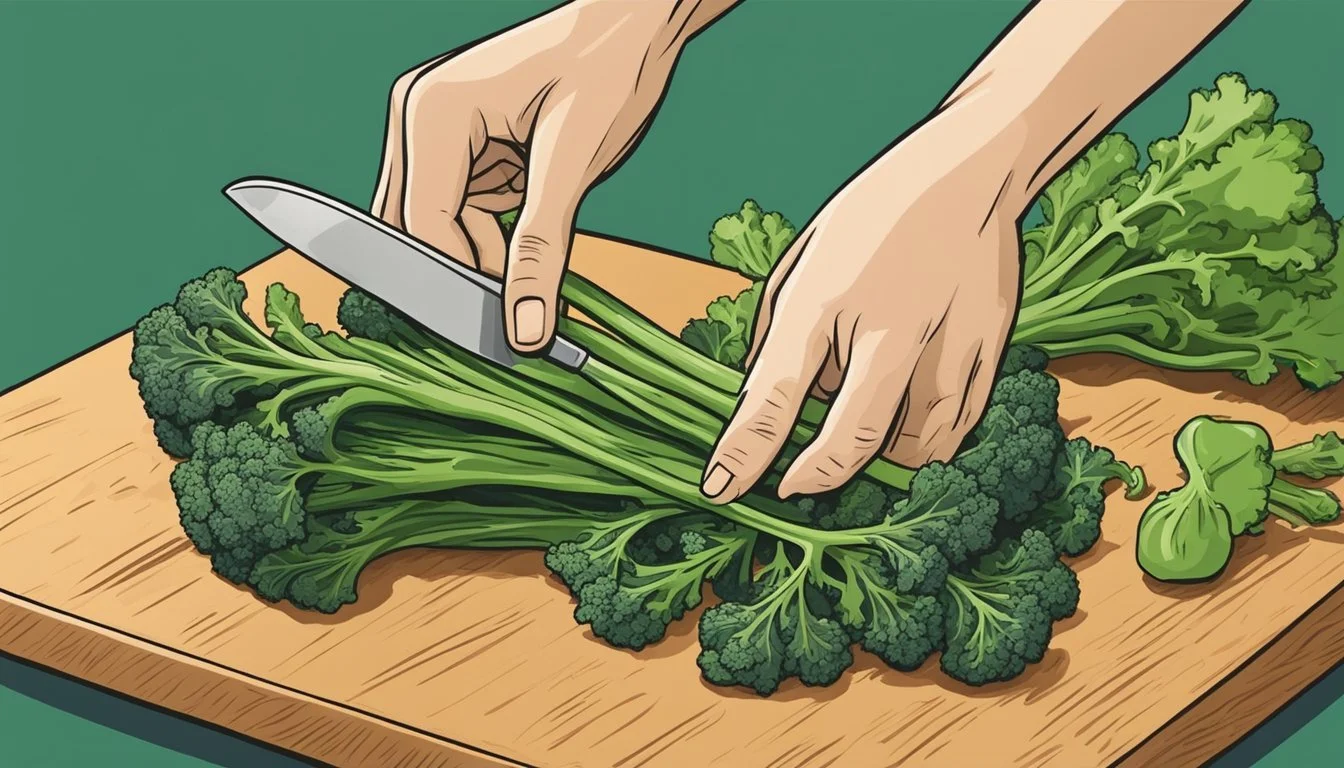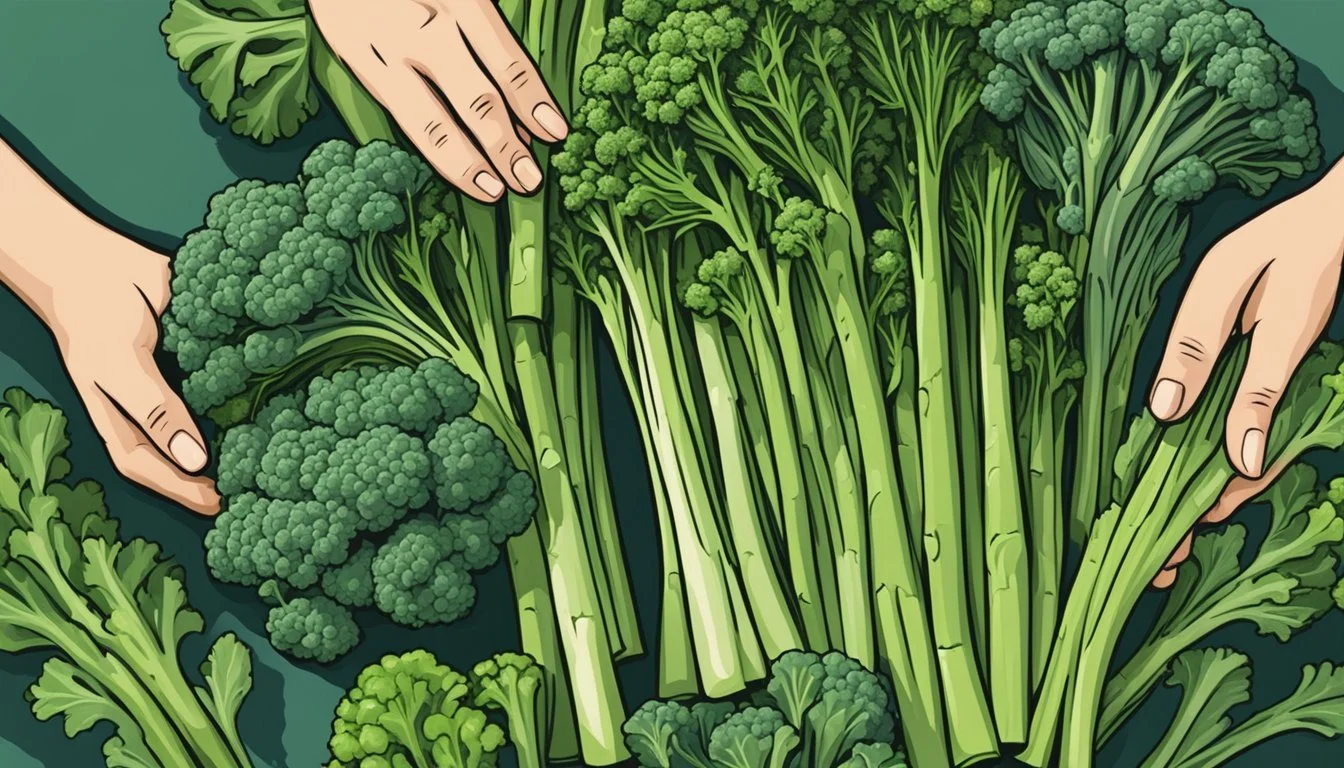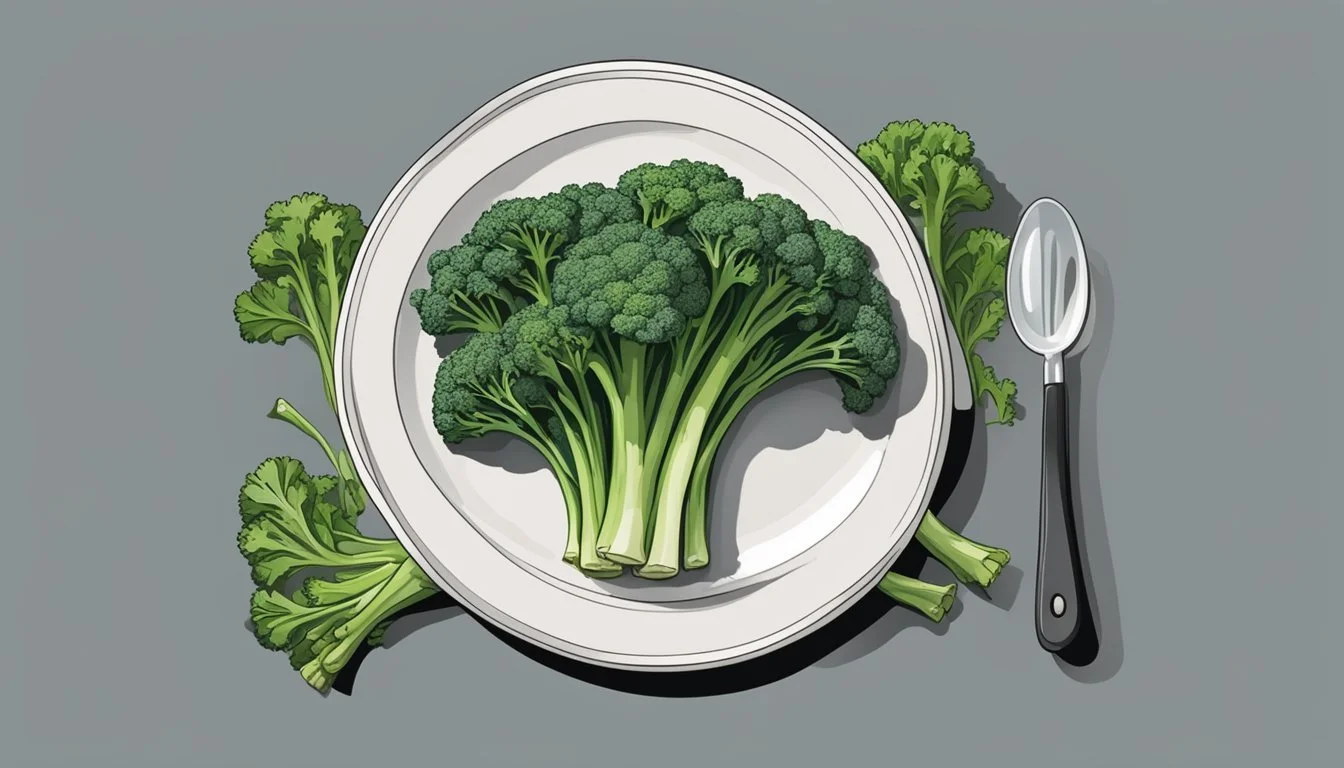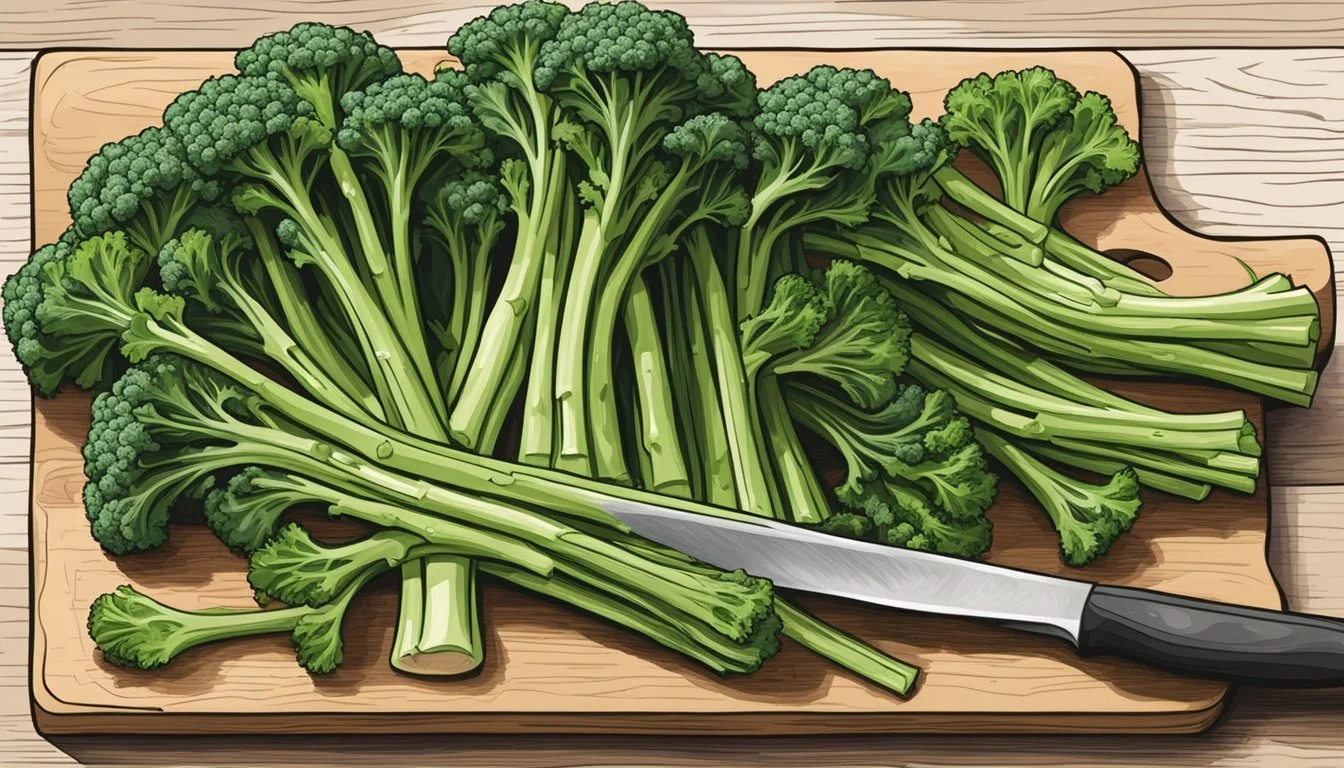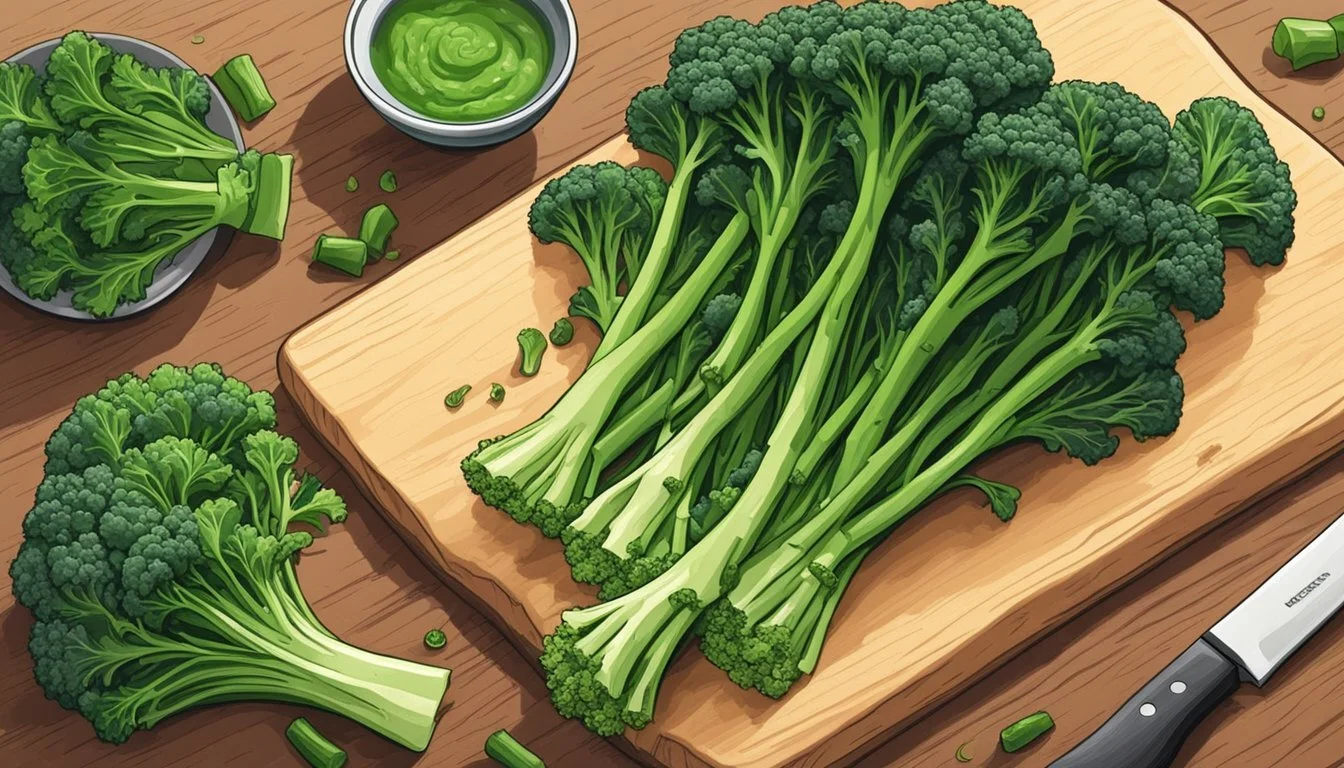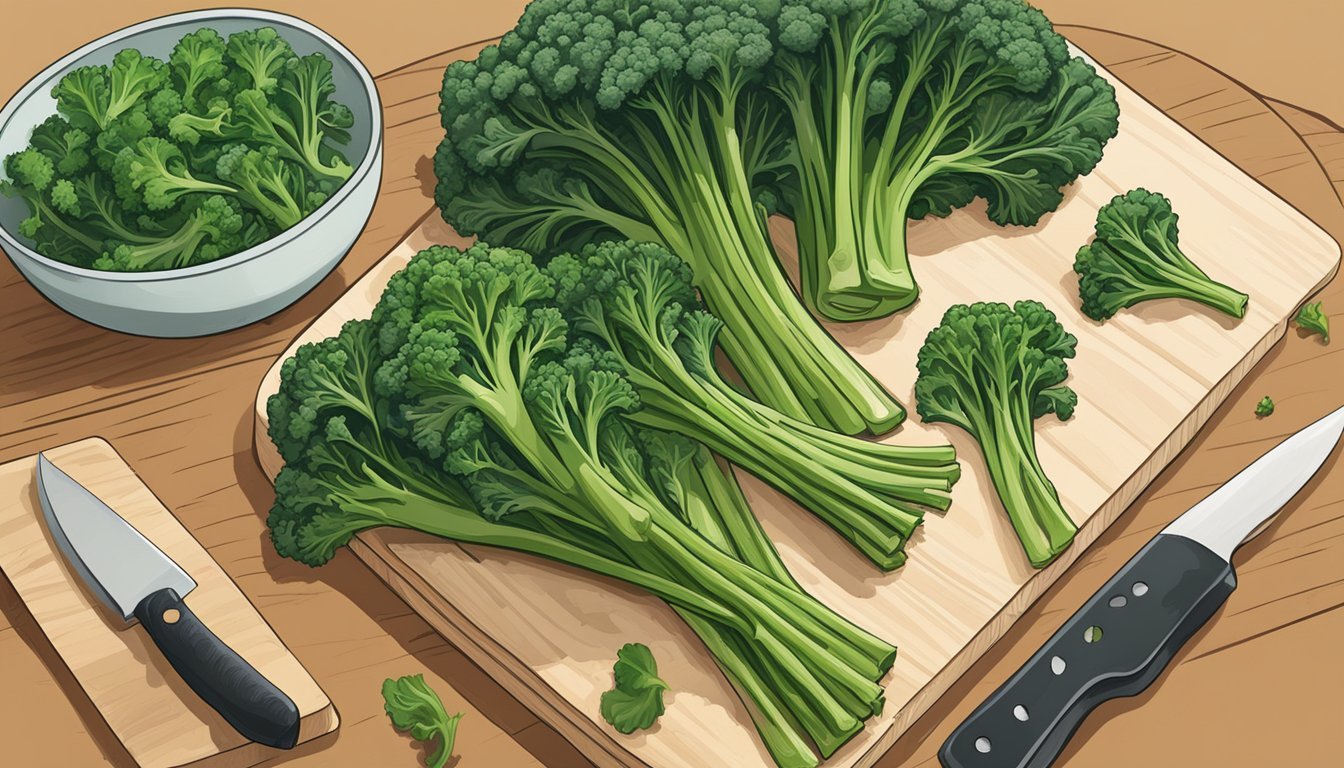How to Substitute Rapini for Broccolini
A Simple Guide for Home Cooks
Rapini, also known as broccoli rabe, is a green cruciferous vegetable known for its slightly bitter taste and leafy appearance. Its bold flavor profile and unique texture make it a favorite in Italian cooking, particularly in pasta dishes (What wine goes well with pasta dishes?), sautés, and as a side item. However, there are occasions when rapini may not be available or when a different flavor or texture is desired in a recipe.
Broccolini, a hybrid of broccoli and Chinese kale, offers a milder taste and a similar appearance, making it an excellent stand-in for rapini. This substitute is less bitter and carries a subtle sweetness that can complement an array of dishes. With its long, tender stalks and delicate florets, broccolini not only mimics the look of rapini but also provides versatility in cooking methods, from blanching and sautéing to roasting and steaming.
When substituting broccolini for rapini, it's essential to consider the texture and flavor differences. While rapini packs a more pungent bite, broccolini introduces a gentler, more broccoli-like flavor to the palate. As a result, broccolini may be more palatable to those who find rapini's bitterness too intense. It seamlessly integrates into recipes traditionally calling for rapini, bringing a fresh twist to the dish while maintaining the vibrant green hues and nutritional benefits commonly sought after in leafy greens.
Understanding Rapini and Broccolini
Rapini, also known as broccoli rabe, is a leafy green vegetable with a pronounced bitter taste. It belongs to the cruciferous family and is notable for its thin stems, spiky leaves, and small green buds that resemble broccoli heads, although they are not as compact. Rapini's flavor is robust, and despite its bitterness, it is favored in Mediterranean cuisine, particularly in Italian dishes.
Broccolini, on the other hand, is often confused with both broccoli and rapini due to its visual similarity to each. It is a hybrid of broccoli and Chinese broccoli (gai lan) and thus shares characteristics with both. Broccolini has long, tender stalks, larger florets than rapini, and a sweeter, milder flavor than both rapini and conventional broccoli.
When comparing these vegetables:
Flavor Profile: Broccolini has a milder, sweeter taste with much less bitterness than rapini.
Appearance: Both have green stalks and florets, but rapini has leafier, more jagged leaves.
The bitterness in rapini is significant to its culinary use and can add depth to a dish. If replacing rapini with broccolini, one might consider the sweetness of broccolini and how it may alter the intended flavor profile of the recipe.
Both vegetables can be prepared similarly—blanched, sautéed, or roasted—and work well with garlic and chili. Adding an acidic component like lemon juice can help balance broccolini's sweetness when used as a substitute for rapini. Likewise, when rapini is not available, other leafy greens like kale may be used, but the distinct bitterness that characterizes rapini will be less pronounced.
Nutritional Comparison
In assessing Rapini and Broccolini, it becomes clear that both vegetables offer valuable nutritional profiles. They share several health benefits and are rich in vital vitamins and minerals essential for a healthy diet.
Health Benefits
Rapini, also known as broccoli rabe, and Broccolini both belong to the Brassica family, which is renowned for health-promoting properties. These cruciferous vegetables are high in antioxidants and contain compounds that may support the body’s defense against diseases. They are also associated with aiding in the prevention of certain cancers due to their glucosinolate content.
Vitamin and Mineral Content
In terms of vitamins and minerals, both vegetables are excellent sources of:
Vitamin C: Important for the growth, development, and repair of all body tissues.
Vitamin E: Acts as an antioxidant, helping to protect cells from the damage caused by free radicals.
Vitamin K: Essential for blood clotting and bone health.
While both vegetables offer similar nutrients, the specific content can vary:
Nutrient Rapini (per 100g) Broccolini (per 100g) Calories 22 35 Vitamin C 20.2 mg 89.2 mg Vitamin E 2.85 mg 0.78 mg Vitamin K 224 µg 101.6 µg Fiber 2.7 g 2.6 g
Broccolini often has a milder flavor and is slightly higher in calories, but provides a substantial amount of Vitamin C. In contrast, Rapini is exceptionally rich in Vitamin K and has a slightly more bitter taste. Both are low in calories and contribute to a healthy, balanced eating plan due to their high nutrient density, fiber content, and minimal fat.
Culinary Uses
Substituting rapini with broccolini in different dishes requires considering their distinct textures and flavors. One can confidently adapt their use in recipes ranging from fresh salads to hearty pasta dishes.
Incorporating into Salads
Broccolini, with its milder taste and tender stems, is an excellent addition to salads. It can be used raw or blanched to retain a satisfying crunch and a vibrant green color, providing a less bitter note in comparison to rapini. Thinly slicing the stems and florets enhances the salad texture and melds flavors with other ingredients effectively.
Cooking Techniques for Pasta Dishes
In Italian dishes, particularly pasta, broccolini serves as a versatile substitute for rapini. For a well-integrated flavor, it's beneficial to blanch broccolini before adding it to pasta. This ensures that it cooks evenly and maintains its succulence. It complements a variety of pasta types from orecchiette to penne, honoring the traditional essence of Mediterranean cuisine.
Sauteeing with Garlic and Olive Oil
The method of sautéing broccolini in garlic and olive oil is a staple in simple yet flavorful Italian recipes. It requires heating olive oil over medium heat before adding minced garlic and broccolini. Cook until the vegetable is tender and infused with the aromatic garlic, which usually takes about 5-6 minutes. This technique brings out a gentle sweetness in broccolini, making it a suitable element in the menu for a variety of dishes.
Taste and Texture Profiles
When substituting rapini (broccoli rabe) for broccolini, a chef must consider the distinctive bitter taste and the texture differences of these greens in their recipes.
Bitterness in Greens
Rapini is known for its bitter and slightly spicy flavor profile, which can be significantly more pronounced than in broccolini. The bitterness is a key characteristic of rapini and may mellow somewhat when cooked but remains a dominant feature. Broccolini, in contrast, has a milder taste, with subtle peppery notes that do not overwhelm the palate.
Texture Differences
The textures of these two greens are distinct: rapini tends to have firmer stems and more robust leaves, while broccolini boasts a tender texture throughout, including its smaller florets and slimmer stalks. When cooking, one must account for these variations to achieve a similar bite and mouthfeel in dishes traditionally made with broccolini.
Substituting Rapini for Broccolini
When one swaps rapini for broccolini in recipes, they must consider flavor, bitterness, and texture to ensure a successful substitution.
Recipe Adaptations
When substituting rapini, also known as broccoli rabe, for broccolini, one should consider the recipe's balance of flavors. Rapini has a more robust, bitter taste and might overwhelm delicate dishes intended for broccolini's milder flavor. For stir-fries or pasta dishes, adding rapini earlier in the cooking process can help mellow its bitterness. In contrast, broccolini can be added later since its flavor is less dominant.
Adjusting for Bitterness
Broccolini is generally sweeter and milder than rapini. To compensate for the increased bitterness when using rapini as a substitute, one might add a pinch of sugar or a splash of lemon juice. Here is a simple approach to adjust for bitterness:
Blanching: Quickly boil rapini for two minutes, then plunge into ice water.
Sautéing: Cook with garlic and olive oil to infuse complementary flavors.
Dealing with Textural Changes
Rapini has more leafy greens and is thinner than the sturdier, thicker stems of broccolini. This difference can affect the final texture of the dish. To achieve a similar bite to broccolini, they should:
Trim the stem ends of the rapini.
Chop into segments that mirror broccolini's floret proportion.
Cook rapini slightly longer to soften its tougher stems and leaves.
Following these specific adjustments can ensure that rapini serves as an effective stand-in for broccolini in various cooking applications.
Alternative Vegetable Substitutes
When substituting rapini, also known as broccoli rabe, various green vegetables offer similar textures and flavors that make them suitable alternatives for different culinary applications.
Using Mustard Greens and Collard Greens
Mustard Greens: These pungent leaves bring a peppery kick, ideal for dishes requiring a sharp, tangy flavor profile. When substituting for rapini, mustard greens can be sautéed or blanched to soften their bite.
Collard Greens: A staple in Southern cooking, collard greens have a heartier texture but mellow out when cooked long enough. They are a suitable substitute when a less bitter taste is preferred, and one can use them in similar ways to rapini, such as in soups or side dishes.
Spinach and Swiss Chard Options
Spinach: This widely available vegetable offers a milder flavor and tender texture, making it an easy substitution in recipes where a delicate touch is needed. It wilts quickly and is best added at the end of the cooking process.
Swiss Chard: With its colorful stems and dark green leaves, chard provides a visual appeal along with a slightly bitter taste. The leaves can replace rapini in most recipes and are excellent when braised or added to pasta dishes.
Exotic Alternatives: Bok Choy and Chinese Broccoli
Bok Choy: Known for its juicy white stalks and dark green leaves, bok choy contributes a mild taste with a hint of sweetness, contrasting with rapini's inherent bitterness. It's a crisp addition to stir-fries and steamed side dishes.
Chinese Broccoli (Gai Lan): Closer in taste and appearance to rapini, Chinese broccoli's slight bitterness and similar stalk-like structure make it an appropriate substitute. It can be used interchangeably in recipes calling for rapini, especially in stir-fried or steamed preparations.
Shopping for Rapini and Broccolini
When shopping for rapini and broccolini, it's essential to recognize what constitutes freshness and to understand their seasonal availabilities. These factors assure the purchase of high-quality vegetables, whether one is at a local market or a larger grocery chain.
Identifying Fresh Produce
Rapini, also known as broccoli rabe, should have firm stalks and vibrant green leaves. The buds of rapini should be tightly closed and the leaves should be free of any yellow spots or signs of wilting. When held, they should feel sturdy and not bend easily.
Broccolini, in contrast, has a resemblance to broccoli with small florets on long, thin stalks. One should look for bright green stalks and firm, closed florets. Any yellowing or flowering florets indicate the broccolini is past its prime.
Stems and leaves are indicators of freshness for both vegetables:
Stalks: Should be firm and not bend easily.
Leaves: Should be a vibrant green without yellow spots.
Florets: Preferably tight, closed, and free of flowers or seeds.
Seasonal Availability
Both rapini and broccolini are leafy green vegetables that are at their peak during specific times of the year:
Rapini: Typically available in fall through spring, when it can be found fresh and of the highest quality. However, in some markets, it may be found year-round.
Broccolini: This vegetable is usually most abundant in the spring, but modern agricultural practices have made it available in many places throughout the year, though availability can vary by region.
Shoppers can usually locate these vegetables in the produce section of most markets, where they are often displayed among other similar green vegetables. It's recommended to check not only supermarkets but also local farmer's markets for the freshest options, as farmers may offer organic and locally-grown varieties which might not be available in larger stores.
Preparing Rapini and Broccolini
Preparing rapini and broccolini properly is crucial for their best culinary use. The process involves cleaning, trimming, and selecting the appropriate cooking method to enhance their flavors while maintaining their unique textures.
Cleaning and Trimming
Rapini and broccolini require thorough cleaning to remove any dirt or impurities. They should be rinsed under cold water and shaken dry. For rapini, the bottom tough ends should be discarded, and any thick stems cut in half. Broccolini, with its tender stalks, may only need the very ends trimmed.
Rapini: Cut off bottom tough ends; slice thick stems.
Broccolini: Trim the ends; usually requires less cutting.
Blanching Techniques
Blanching is a recommended technique to maintain vibrant color and reduce bitterness, especially for rapini. It involves boiling the vegetables for a few minutes and then plunging them into ice water.
Boil water in a large pot.
Submerge rapini or broccolini for 2-3 minutes.
Transfer to an ice bath to stop the cooking process.
Braising and Other Cooking Methods
After blanching, rapini and broccolini can be further cooked using methods such as sautéing or braising. Sautéing in olive oil with garlic enhances the vegetables' flavors and tenderizes them. For a deeper flavor, they can be braised with stock, wine, or additional aromatics.
Sautéed Rapini/Broccolini: Cook in olive oil and garlic over medium heat.
Braised Rapini/Broccolini: Simmer with a liquid base until tender.
Incorporating into Dietary Lifestyles
When substituting rapini with broccolini, individuals adhering to specific dietary preferences can still maintain their dietary principles. Broccolini fits seamlessly into vegetarian, vegan, and low-calorie meal plans due to its nutritional profile and versatility.
Vegetarian and Vegan Considerations
For vegetarians and vegans, broccolini is a fitting substitute for rapini as it is a plant-based source of essential nutrients. It is rich in vitamins A, C, and K, and provides dietary fiber as well as minerals like iron and calcium. To incorporate broccolini into their diet, one could prepare it in the following ways:
Steamed or blanched to retain maximum nutrition and served with a drizzle of olive oil and a sprinkle of sea salt.
Sautéed with garlic and other vegetables as part of a colorful stir-fry.
Roasted to bring out a slightly sweeter flavor, tossed with a bit of balsamic vinegar.
Low-Calorie Diet Options
Individuals following a low-calorie diet can benefit from the inclusion of broccolini as a substitute for rapini with its low-calorie count. Broccolini provides a feeling of fullness with minimal calories, making it an excellent option for those looking to manage their weight. Here are simple ways to include broccolini for a low-calorie diet:
Serve raw broccolini in salads with a light dressing for a crunchy, nutritious addition.
Combine with other low-calorie vegetables in a mixed vegetable grill.

